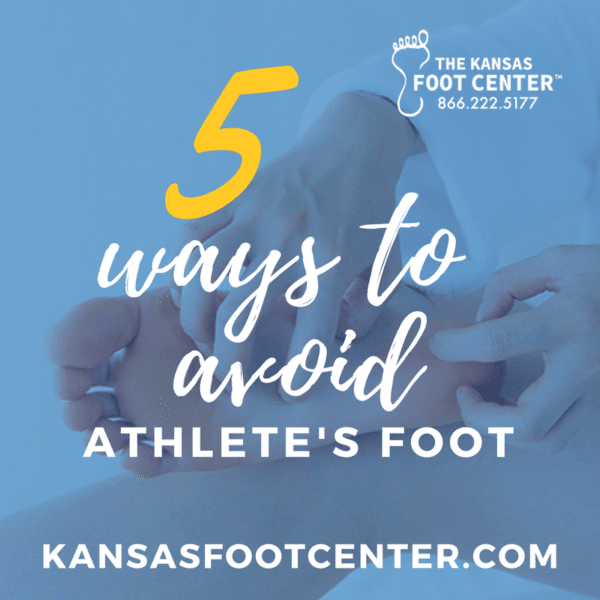Athlete’s Foot
Help for itching, burning feetAthlete’s foot can cause a lot of embarrassment and frustration, especially during the warmer summer months when it might keep you from revealing your scaly, dry, reddish skin with open-toed shoes. Of course, it can also cause significant pain and discomfort, too. Itchiness can be significant, especially right after you remove your footwear, and serious cases might even lead to blisters and ulcers.
Worse, the same fungus that causes athlete’s foot can spread to other parts of the body, including the hands, groin, or toenails. And cracked, dry, blistered skin can open the door for other complications, such as bacterial infections. So even if you think your athlete’s foot “isn’t that bad” right now, it’s in your best interest to deal with it soon, rather than give it time and opportunity to spread.
Getting Rid of Your Athlete’s Foot
Athlete’s foot takes a little while—usually a few weeks to a few months—to fully eradicate. We recommend a two-phase treatment approach. In the first phase, you use over-the-counter products to treat yourself. If that doesn’t resolve the problem, or you have other health risks (such as diabetes) that make self-care unwise, you move to the second phase—professional treatment at Kansas Foot Center.
Home Care
Almost any drugstore or pharmacy will carry some types of over-the-counter topical antifungal, including terbinafine (Lamisil), clotrimazole (Lotrimin), tolnaftate (Tinactin), and many others. We provide antifungal remedies in our office and our online shop, including foam, spray, and cream. We also offer ShoeZap, an effective germicidal light that kills the elements responsible for fungal infections, odor, and other problems.
Complete the full treatment course using your antifungal cream, lotion, or spray, even if symptoms resolve sooner. You should also make sure you’re keeping feet clean and dry by washing them daily, drying thoroughly (especially between the toes) and changing socks and shoes regularly. We’d also recommend using antifungal powder in your shoes overnight.
When Home Care Fails
If symptoms don’t get better after your home treatments, or if you find athlete’s foot keeps returning almost immediately, you should schedule an appointment with us. We’d also recommend jumping straight to this step if you have diabetes, poor circulation, or any other condition that increases risks to foot health.
In rare cases, you may have mistaken your athlete’s foot for a different condition, such as eczema, which requires a different treatment course. We’ll of course be able to provide a proper diagnosis and get you the help you need.
If the problem really is athlete’s foot, and your case is just particularly severe, we can prescribe more powerful antifungal medications you can’t find on store shelves, including oral pills if necessary. This could be alongside medications for inflammation (such as cortisone) or antibiotics, if raw skin or blistering has opened the way for bacterial infections.
Fungal infections will almost always clear up with these tougher measures. However, it’s important to keep up with good hygiene habits for the long term to ensure athlete’s foot does not return.
 Causes, Risk Factors, and Prevention
Causes, Risk Factors, and Prevention
Athlete’s foot is caused by a class of keratin-eating fungi called dermatophytes. Keratin is abundant in hair, skin, and nails. When the fungus infects the skin of the feet, it causes athlete’s foot. When it infects other areas, it can produce jock itch, ring worm, or fungal toenail infections.
Dermatophytes can spread through indirect contact, meaning they can transfer from one foot, to a floor, to someone else. They also love environments that are dark, wet, and hot. Pool decks, public locker rooms and showers, and playgrounds are all possible transmission zones. However, they particularly love to congregate inside sweaty shoes. That’s why we strongly encourage you to change shoes and socks regularly, rotate between pairs of shoes daily, and use anti-fungal powder in your shoes between uses.
Aside from these strategies, other prevention tips include:
- Avoid walking barefoot in public. Wear shower shoes or sandals.
- Do, however, give your feet a chance to air out when you’re at home, unless you have diabetes and need to protect your feet inside.
- Use talcum powder to reduce foot perspiration
- Choose shoes made from airy, breathable fabrics
- Wear moisture-wicking socks that keep your feet dry
If your athlete’s foot is severe and symptoms aren’t improving despite your home care strategies, please reach out to The Kansas Foot Center. Our team will help you take care of your problem as quickly and simply as possible. Give us a call in Wichita today at (866) 222-5177.

 Causes, Risk Factors, and Prevention
Causes, Risk Factors, and Prevention